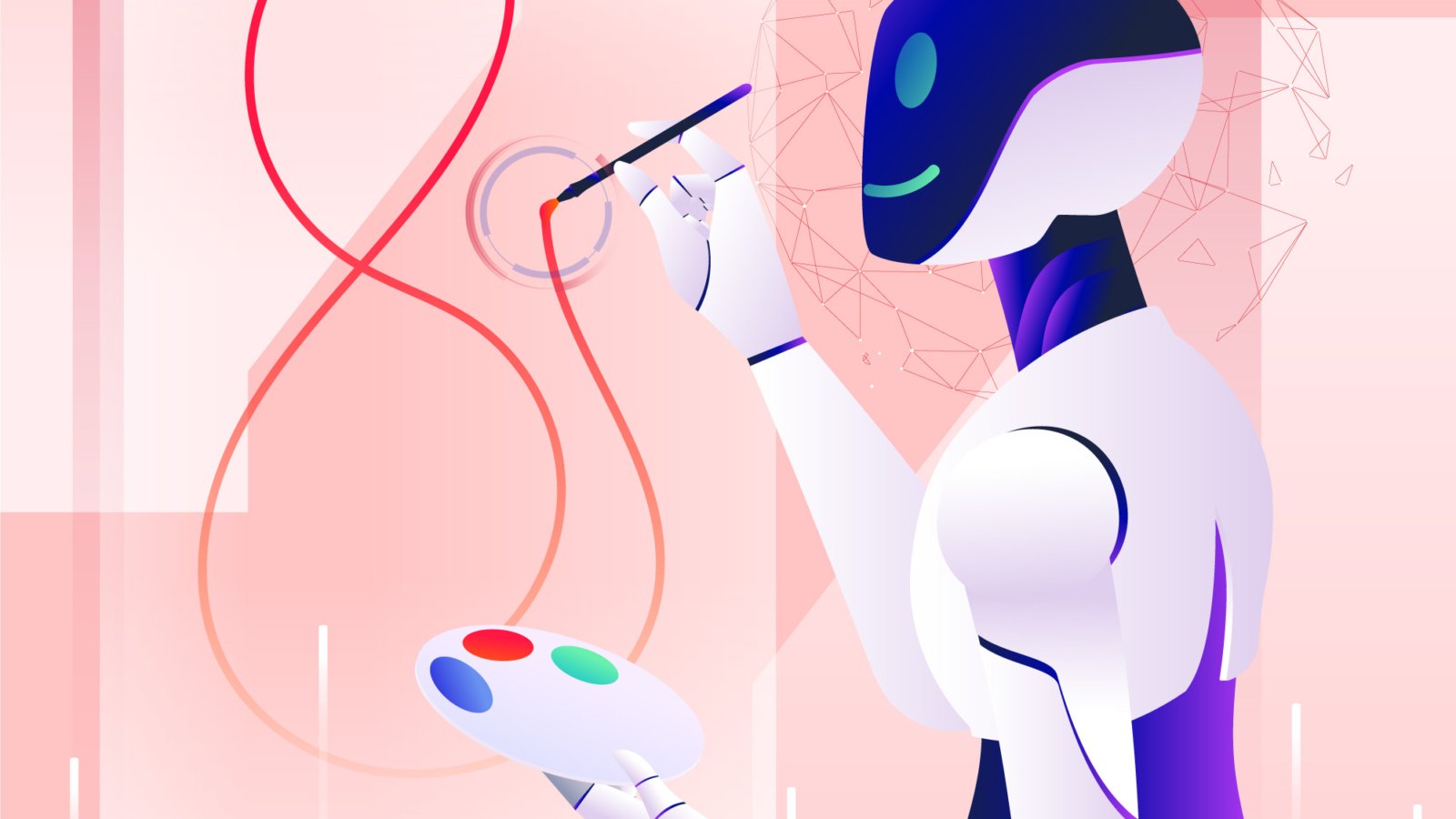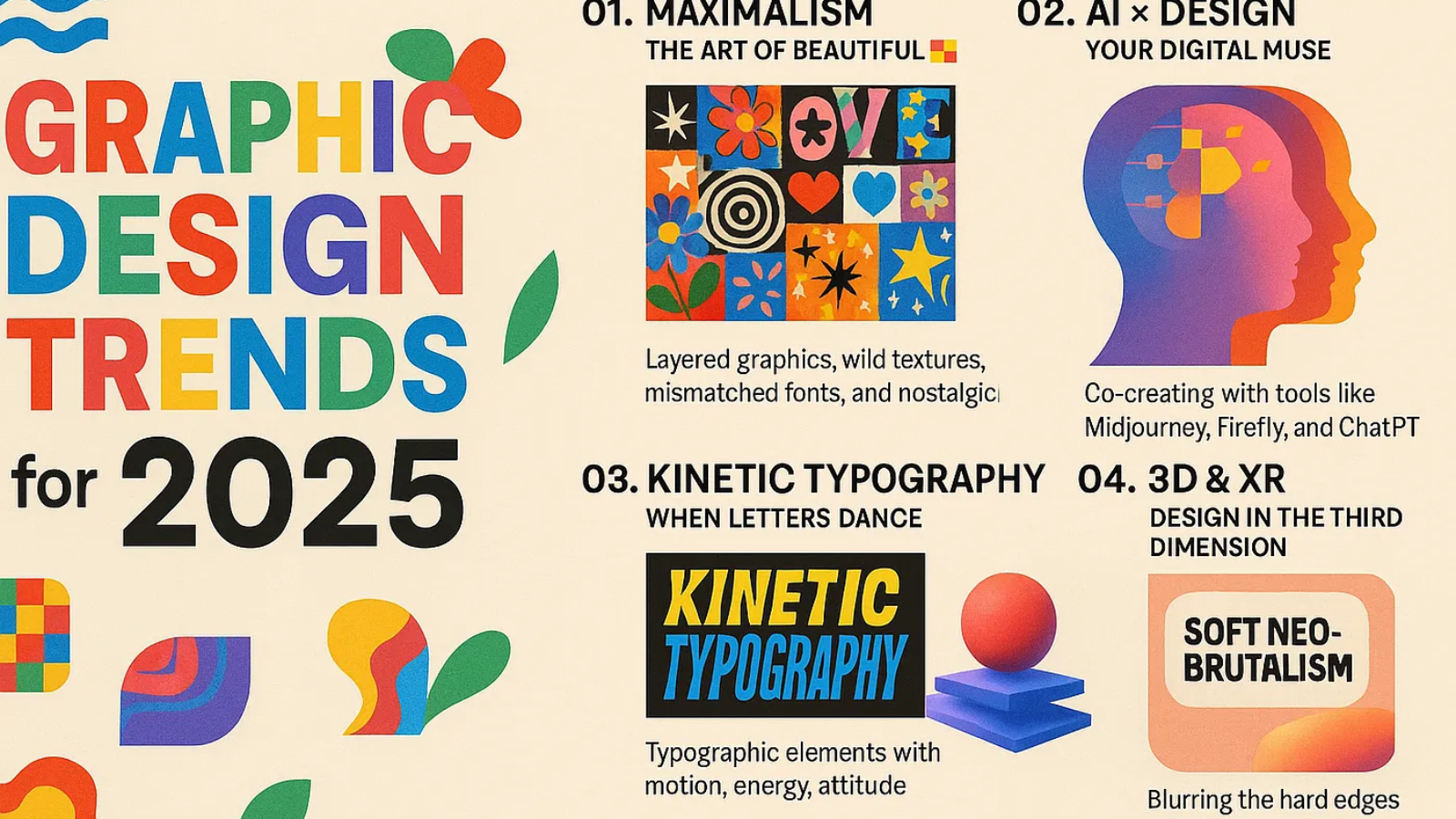Introduction
The year 2025 is a revolutionary year for the design world. While AI graphic design thrives at a shoot-miss-happily pace, designers now no longer fear the coming of artificial intelligence but welcome it as its creative partner. The robot half now does the grunt work half, and the designers just do the doing the art and planning half of the business.
In our experience at Web Technologies Pakistan, AI-powered tools are cutting design timelines from days to minutes without sacrificing quality. This is a change in the way creation occurs, not just a time-saving invention.
This blog will examine how automation and AI graphic design are transforming processes, fostering creativity, and influencing the direction of visual communication.
What is AI graphic design?
AI Graphic Design is the use of artificial intelligence computer programs and automated hardware to assist, supplement, or create full visual designs with faster and more tailored outcomes.
While in the past, the designer would have an empty sheet of paper to experiment on, now they can input ideas, design categories, or even a keyword into AI systems such as Adobe Firefly, MidJourney, or Canva Magic Studio and get edge-of-time design concepts within seconds.
Example: An hour-long look is now achievable in 60 seconds via AI prompts that are being added to all the time.
Streamlining the Creative Process
AI graphic design software provides features like resizing, background stripping, and templating readily available at the fingertips so that designers can allocate time for more productive creative effort.
For example, Remove.bg and Figma’s AI plugins simplify daily tasks so that graphic designers can focus on quicker branding, storytelling, and designing.
Why it matters:The name of the game in 2025 is speed—customers want today’s designs. Automation covers gaps without sacrificing creativity.
AI Branding Solutions
AI graphic design makes it simple to design typography systems, color schemes, and logos based on target market preference and trend.
Artificial intelligence analysis enables companies to create audience-focused, data-driven style guides. A green company purchasing AI-created branding with calming greens, soft textures, and earthy shapes.
Impact: Back-and-forth weeks and cyclical brainstorming are avoided by AI branding tools but not by human designers’ capacity for emotional resonance.
Real-Time Design Personalization
AI graphic design technology allows new content to be created pre-rendered in real-time as a function of user demographics, location, or web browsing history.
To see it: an e-commerce banner specifically tailored in background colour, font, or product showcased based on audience—gracias to AI.
Example: One ad for sportswear can turn into running shoes for runners and trekking shoes for outdoor walkers in an instant.
AI for Video Editing and Motion Graphics
AI graphic design makes its entry into the video editing, motion graphics, animation, and visual effects production space.
Runway AI and Pika Labs are software tools that now allow the creators and the marketers to write down the animated content simply by counting out the scene. AI even lifts the frame rates, color grades, and even captions for you.
What sets it apart:Video is the 2025 ad behemoth where AI halves production time and doubles creative output.
Data-Driven Directional Design Decisions
AI graphic design uses data to inform direction in creativity in a way that the designs are not only gorgeous but data-driven by conversion.
With click-through rate, engagement rate, and color psychology data analytics, AI makes performance-based design recommendations.
Example: AI can show how using a certain color of the call-to-action button gives 18% more conversions and can educate designers on how to implement data-driven solutions.
Human Imagination through AI
AI graphic design is a reality when human imagination creates the vision and AI addresses the time-consuming part of the work.
Hybrid Web Technologies Pakistan processes concern us—designers provide thought, emotional resonance, and story, and then AI is used to scale, format, and solve out ideas.
Eureka moment: AI won’t steal designers’ jobs; it unleashes their superpowers.
AI for Accessible Design
AI graphic design provides innovative tools to promote usability requirements of disabled marketplaces.
AI can automatically scale contrast ratio adjustment, write alt text for an image, and even create adaptive design color-blind compliant.
Impact: Accessible design is hardly optimal—it optimizes marketplace reach, so accessibility will only be at the center of AI creativity in 2025.
Cost Savings through the use of AI
AI graphic design reduces the expense of a project in terms of time saved on work and small businesses’ ability to create professional-standard designs for free so they can pay for an entire team of experts.
Contrary to some of the experts’ costs, an amazing single designer with the support of AI can create volume multi-channel campaigns.
Outcome: Fewer turnarounds and overheads enable companies to spend more on strategy and expansion.
Future AI & Graphic Design Automation
AI Graphic Design 2025 is only the beginning—long-term or earlier future changes will see automated design environments that can output campaigns with minimal human touch.
We are headed toward a future where AI-driven technologies can identify trends, create and send campaigns, and monitor performance—all within one machine cycle.


